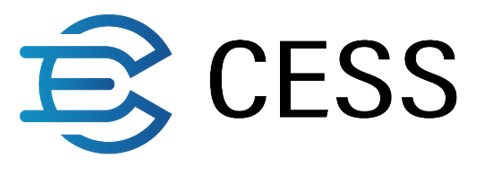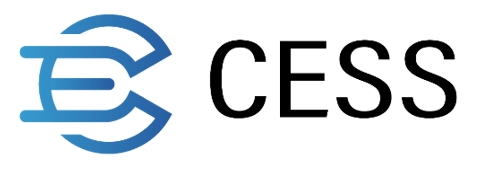Develop with CESS Javascript APIs
Overall
In this tutorial, we will interact with the CESS testnet via cess-js-sdk, this is particularly useful for Node.js or frontend developers integrating CESS into their products or systems.
Prerequisite
Node.js v18 or above.
Code
The code examples used in this tutorial are available on GitHub under the cess-examples repository. We will walk through the code together.
The tutorial code performs the following:
Check the user storage space and its expiration time on CESS (read operations on the blockchain).
Lease space on the CESS testnet. (write operations on the blockchain)
Create a bucket (write operations on the blockchain)
Query existing files in the CESS Cloud (read operations on the blockchain)
Upload a file to the bucket (write operations on the blockchain)
Download the file back.
CESS Testnet RPC endpoint: wss://testnet-rpc0.cess.cloud/ws/ CESS Testnet File gateway: https://deoss-pub-gateway.cess.cloud/
First, install cess-js-sdk by running the following command.
These commands add cess-js-sdk dependency into your project.
Then we initialize the API with InitAPI() call:
The InitAPI() function receives a CESSConfig object that has the following shape:
testnetConfig is a CESSConfig instance with configuration connecting to the CESS testnet.
After that, we can use the api and keyring returned to create Space, Bucket, and File services.
Each of these services requires both the api and keyring to be passed in as parameters.
Let's take a deeper look at using Space service.
Using the Space Service
Let's look at the function checkNRentSpace().
You can query your used space with space.userOwnedSpace(). It returns an object similar to the following:
There is a utility class Common that formats the above data to be more readable with
It returns the following object:
You may notice a blockHeight is passed in as a parameter in formatSpaceInfo() to calculate the deadlineTime.
If this is the first time you rent spaces from CESS, use the API:
Otherwise, you can use expandSpace() to expand the amount of capacity and renewalSpace() to extend the length of the space leased.
expansionSpace(mnemonicOrAccountId32: string, gibCount: number): Promise<any>renewalSpace(mnemonic: string, days: number): Promise<any>
Using the Bucket Service
We use the Bucket service to query information about buckets created by users (a concept similar to directories in our local hard drive), create buckets, and delete buckets.
Let's look at the code in checkNCreateBucket().
queryBucketList() returns an array of objects similar to the following:
Each item is a bucket with the key as its bucket name. So this user has three buckets, named xhftBucket, test, and test2. xhftBucket bucket has one item inside, with test and test2 being two empty buckets.
We can query more details about a particular bucket with queryBucketInfo(). It returns an object with the following shape.
It contains information about what files inside the bucket and users who have write access to them. By default, only the creator of the bucket can write to it. But users can use Authorize service to grant this access to other users.
You can create a bucket with createBucket() call and delete a bucket with deleteBucket(). Both functions require you to pass in the mnemonic as you will send a signed transaction (requiring your private key) to the CESS blockchain.
Using the File Service
Let's look at how to query our uploaded files and manage them by looking into uploadNDownloadDeleteFile() function.
We use queryFileListFull() to query the files that the user is accessible to. It returns an object similar to the following.
It contains the file name, file size, bucket name, and the file hash.
To upload a file to the CESS cloud, use uploadFile(). It takes the upload file path and bucket name as parameters in addition to the account mnemonic.
Once the file is uploaded, you can query the file on the cloud to get its hash and use the hash value to download the file back with downloadFile().
API
Space
This service is for managing user space. You can query, renew, and expand spaces used in CESS.
userOwnedSpace(accountId32: string): Promise<APIReturnedData>buySpace(mnemonic: string, gibCount: number): Promise<any>expansionSpace(mnemonicOrAccountId32: string, gibCount: number): Promise<any>renewalSpace(mnemonic: string, days: number): Promise<any>
Bucket
This service is for managing user buckets, a concept similar to directory in a local hard drive.
queryBucketNames(accountId32: string): Promise<APIReturnedData>queryBucketList(accountId32: string): Promise<APIReturnedData>queryBucketInfo(accountId32: string, name: string): Promise<APIReturnedData>createBucket(mnemonic: string, accountId32: string, name: string): Promise<any>deleteBucket(mnemonic: string, accountId32: string, name: string): Promise<any>
File
This service is for managing user files in the CESS cloud.
queryFileListFull(accountId32: string): Promise<APIReturnedData>queryFileList(accountId32: string): Promise<APIReturnedData>queryFileMetadata(fileHash: string): Promise<APIReturnedData>uploadFile(mnemonic: string, accountId32: string, filePath: string, bucketName: string): Promise<any>downloadFile(fileHash: string, savePath: string): Promise<any>deleteFile(mnemonic: string, accountId32: string, fileHashArray: string[]): Promise<any>
Authorize
This service is for managing delegated rights to other users.
authorityList(accountId32: string): Promise<APIReturnedData>authorize(mnemonic: string, operator: string): Promise<any>cancelAuthorize(mnemonic: string, operator: string): Promise<any>
Conclusion
With cess-js-sdk APIs, you can incorporate CESS cloud into your products. If you have any feedback about this tutorial, feel free to contact us.
Last updated

